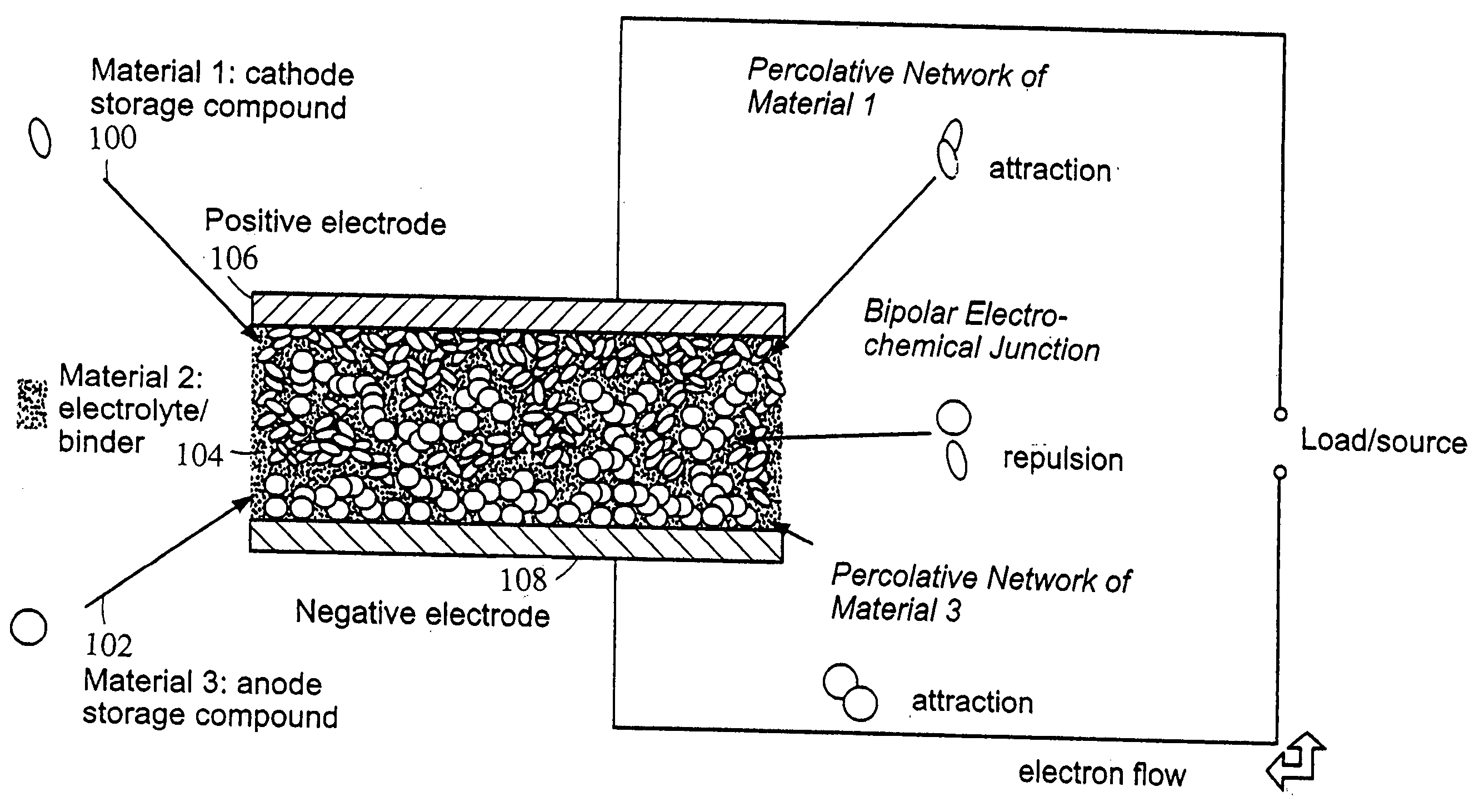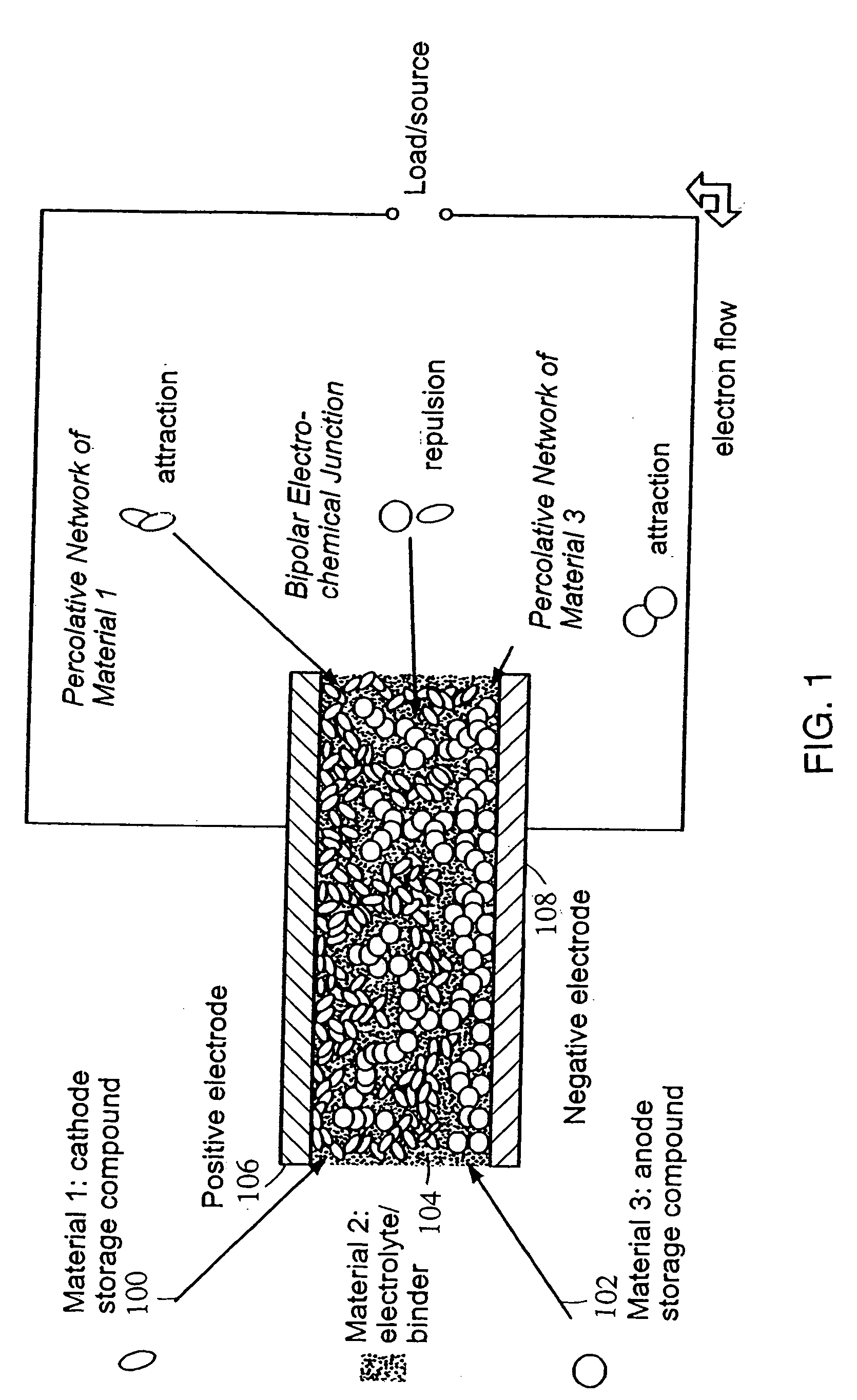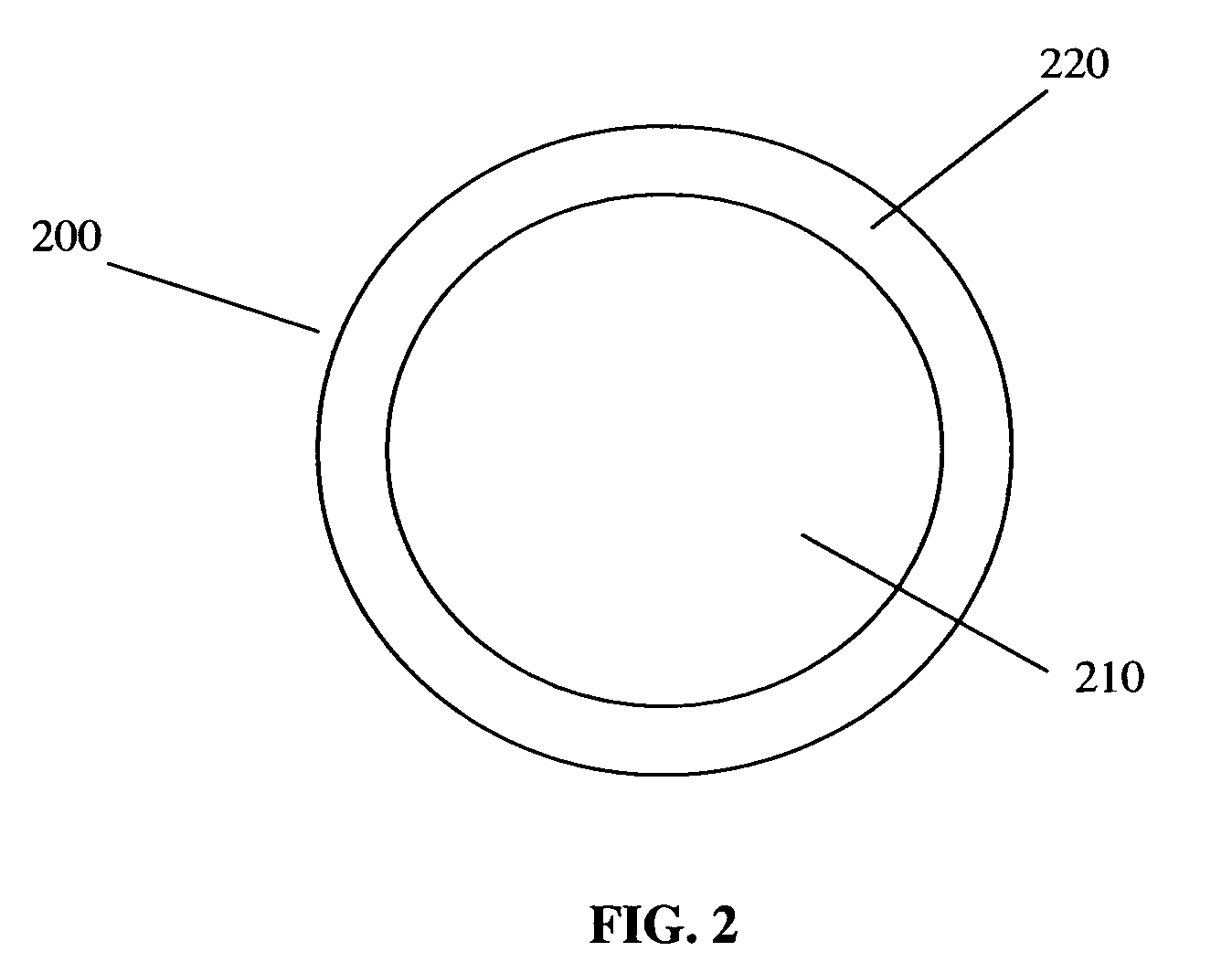Polymer composition for encapsulation of electrode particles
a technology of polymer composition and electrode particles, which is applied in the direction of cell components, cellulosic plastic layered products, secondary cells servicing/maintenance, etc., can solve the problem of unusable shorting of the electrochemical devi
- Summary
- Abstract
- Description
- Claims
- Application Information
AI Technical Summary
Problems solved by technology
Method used
Image
Examples
example 1
This example describes the synthesis of fluorinated thiophene monomers. Most of the development work was done with fluoroalkylthiophene ethers such as 3-pentadecafluorooctyloxythiophene (Th-O-1,7) (Structure VI) and the structurally similar 3-methyl-4-pentadecafluorooctyloxythiophene (Me-Th-O-1,7) (Structure VII).
These ethers were prepared using a modified procedure published by Lemaire, J. Electroanal. Chem. 326:357-362 (1992), as illustrated here for Th-O-1,7. In a glove box, 0.72 g NaH was added to a 250 mL three-neck round bottomed flask. 10 g of 2,2,3,3,4,4,5,5,6,6,7,7,8,8,8-pentadecafluorooctan-1-ol and 10 g of ethyleneglycoldimethylether were mixed and added to the NaH. The mixture was stirred for 20 min. 7.4 g of 3-bromothiophene was added, followed by 2.34 g of CuI. The flask was removed from the glove box, fitted with a reflux condenser and an inert gas (nitrogen or argon) inlet, and then heated to reflux (˜95° C.) with stirring for 15 h. The product was isolated using...
example 2
This example describes the synthesis of fluorinated ethylenedioxythiophene monomers, pentadecafluoro octanoic acid 2,3-dihydro-thieno[3,4-b][1,4]dioxin-2-ylmethyl ester (EDOT-F), and the PrODOT-F analog. EDOT-F (monomer Structure VIII) and PrODOT-F (monomer Structure IX) were synthesized following the procedures disclosed by Lima et al., Synth. Met. 93:33-41 (1998) (method for making EDOT-MeOH, a precursor to EDOT-F) and Schwendeman et al., Adv. Funct. Mater. 13:541-5417 (2003) (method for synthesizing and purifying EDOT-F from EDOT-MeOH).
example 3
This example describes polymerization of the fluorinated monomers Th-O-1,7, Me-Th-O-1,7, EDOT-F, and PrODOT-F.
A. Chemical Polymerization
A typical chemical polymerization for the thiophene-based monomers, Th-O-1,7 and Me-Th-O-1,7, was performed by oxidative coupling of the fluorinated thiophene monomer by FeCl3 as described by Lemaire, J. Electroanal. Chem. 326:357-362 (1992), and illustrated here for the Th-O-1,7 monomer. To a 3-neck round bottomed flask were added 2.25 g of anhydrous FeCl3 and 50 mL of dry CHCl3. 1.68 g of Th-O-1,7 was dissolved in 16.8 g CHCl3 and added dropwise to the stirred FeCl3 / chloroform slurry over 10 min. at room temperature. The reaction was allowed to proceed for 2 h., after which the product powder was filtered and extracted overnight using chloroform in a soxhlet apparatus, and then dried in vacuo overnight. Alternatively, the FeCl3 slurry can be added slowly to the monomer solution at room temperature.
A typical chemical polymerization for the al...
PUM
| Property | Measurement | Unit |
|---|---|---|
| vol. % | aaaaa | aaaaa |
| vol. % | aaaaa | aaaaa |
| vol. % | aaaaa | aaaaa |
Abstract
Description
Claims
Application Information
 Login to View More
Login to View More - R&D
- Intellectual Property
- Life Sciences
- Materials
- Tech Scout
- Unparalleled Data Quality
- Higher Quality Content
- 60% Fewer Hallucinations
Browse by: Latest US Patents, China's latest patents, Technical Efficacy Thesaurus, Application Domain, Technology Topic, Popular Technical Reports.
© 2025 PatSnap. All rights reserved.Legal|Privacy policy|Modern Slavery Act Transparency Statement|Sitemap|About US| Contact US: help@patsnap.com



